Rainfall
Type of resources
Available actions
Topics
Keywords
Contact for the resource
Provided by
Years
Formats
Representation types
Update frequencies
Scale
-
Rainfall observations from the Armagh Observatory, founded in 1790 by Archbishop Richard Robinson. As well as astronomical observations various meteorological parameters have been recorded since 1794. If users wish to find data from other areas of work undertaken by the observatory they should visit the Armagh Observatory website.
-
The Quantifying Flood Risk of Extreme Events using Density Forecasts Based on a New Digital Archive and Weather Ensemble Predictions Project is a Natural Environment Research Council (NERC) Flood Risk for Extreme Events (FREE) Research Programme project (Round 1 - NE/E002013/1 - Duration January 2007 - December 2008) led by Dr Patrick McSharry, University of Oxford. The dataset contains a collection of rainfall depth maxima data, dating back to 1860, plus associated description documents and rainfall maps of extreme events across the UK, have been used. All of these products have been digitised from the paper version of the British Rainfall publication, and are now archived at the BADC to enable easy access for future use and the wider community.
-
The Quantifying Flood Risk of Extreme Events using Density Forecasts Based on a New Digital Archive and Weather Ensemble Predictions Project is a Natural Environment Research Council (NERC) Flood Risk for Extreme Events (FREE) Research Programme project (Round 1 - NE/E002013/1 - Duration January 2007 - December 2008) led by Dr Patrick McSharry, University of Oxford. The dataset contains a collection of rainfall depth maxima data, dating back to 1860, plus associated description documents and rainfall maps of extreme events across the UK, have been used. All of these products have been digitised from the paper version of the British Rainfall publication, and are now archived at the BADC to enable easy access for future use and the wider community. Floods in the UK are often caused by heavy rainfall lasting from minutes to weeks. Efficient management and mitigation of flood risk, especially surface water flooding in urban areas, requires accurate and reliable precipitation forecasts as inputs to flood risk models. Houses in flat areas are particularly at risk and meeting the shortage of houses in the south-east requires building on these areas. To estimate the flood hazard risk in order to try to protect these buildings, accurate rainfall predictions are needed. However, the connection between record rainfall and flooding is highly nonlinear, so that rainfall predictions must also say how likely rainfall is at any time - calculating the probability of rainfall. Extreme rainfalls caused devastating floods in Boscastle in 2004 and Lynmouth in 1952, but the causes and pattern of rainfall was different. Therefore, scientists also need to know what pattern of rainfall caused the flooding. This research aims to get good quality predictions of the probability of rainfall by combining advanced methods from statistics, the output from a new supercomputer model of the weather, and a new computer archive of exteme rainfalls going back to 1866 (and up to 1968), provided by a specialist company Hydro-GIS Ltd. It also aims to produce an automatic system for discovering the most likely pattern in the predicted rainfalls. The new prediction system and data will be freely available over the internet for use by the government and universities.
-
The Auchencorth Moss Atmospheric Observatory was setup in 1995 to measure meteorology, trace gases, aerosols and their fluxes. It is (55ᵒ47’36” N, 3°14’41” W) an ombrotrophic peatland with an extensive fetch at an elevation of 270 m, lying 18 km SSW of Edinburgh, UK, and can be categorised as a transitional lowland raised bog. The site is grazed with < 1 sheep ha^-1. During 2000s the site activity has increased and was established in 2006 as EMEP (European Monitoring and Evaluation Program, Level 2/3) supersite for the UK. Long term monitoring is led by NERC CEH with contributions from other organisations/research institutes including Ricardo AEA, BureauVeritas, NPL, the University of Birmingham and University of Edinburgh. In April 2014 the site was awarded WMO GAW regional station (World Meteorological Orgamisation Global Atmospheric Watch). In 2017 the site joined the ICOS network (Integrated Carbon Observation System). Similar measurements are also made at nearby Easter Bush Field site by the same team. The meteorological measurements were initially made to assist with interpretation of the fluxes and as such weren't installed with the intention of providing WMO standard measurements.
-
Gro for GooD Rainfall Data from 22 Manual Rain Gauges, Kwale County, Kenya (NERC grant NE/M008894/1)
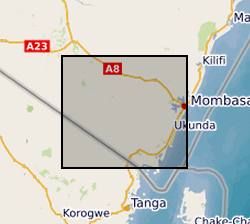
The dataset consist of daily rainfall data for 22 manual rain gauge stations installed by Gro for GooD project within and about the study area. The installed stations covering four river catchments name Ramisi River, Mukurumudzi River, Mtawa River and Mwachema River in Kwale County. The dataset period is from January 2016 to September 2017. Gro for GooD: Groundwater Risk Management for Growth and Development
-
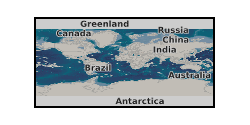
Data from laboratory experiments conducted as part of project NE/K011464/1 (associated with NE/K011626/1) Multiscale Impacts of Cyanobacterial Crusts on Landscape stability. Soils were collected from two sites in eastern Australia and transferred to a laboratory at Griffith University, Queensland for conduct of experiments. Soils were A, a sandy loam, and B a loamy fine sand. Trays 120 mm x 1200 mm x 50 mm were filled with untreated soil that contained a natural population of biota. Soils were either used immediately for experiments (physical soil crust only: PC) or were placed in a greenhouse and spray irrigated until a cyanobacterial crust has grown from the natural biota. Growth was for a period of 5 days (SS), c.30 days (MS2) or c.60 days (MS1). Following the growing period (if applicable) trays were placed in a temperature/humidity controlled room at 35° and 30% humidity until soil moisture (measured 5 mm below the surface) was 5%. Trays were then subject to rainfall simulation. Rainfall intensity of 60 mm hr-1 was used and rainfall was applied for 2 minutes (achieving 2 mm application), 8 minutes (achieving 8 mm application) or 15 minutes (achieving 15 mm application). Following rainfall, trays were returned to the temperature/humidity-controlled room under UV lighting until soil moisture at 5 mm below the surface was 5%. A wind tunnel was then placed on top of each tray in turn and a sequential series of wind velocities (5, 7, 8.5, 10, 12 m s-1) applied each for one minute duration. On each tray the five wind velocities were run without saltation providing a cumulative dust flux. For the highest wind speed, an additional simulation run was conducted with the injection of saltation sands. Three replicates of each rainfall treatment were made. Variables measured include photographs, spectral reflectance, surface roughness, fluorescence, penetrometry, chlorophyll content, extracellular polysaccharide content, Carbon, Nitrogen and splash erosion and particle-size analysis (of wind eroded material). Details of rainfall simulator, growth of cyanobacteria, laser soil surface roughness characterisation and wind tunnel design and deployment in Strong et al., 2016; Bullard et al. 2018, 2019. Bullard, J.E., Ockelford, A., Strong, C.L., Aubault, H. 2018a. Impact of multi-day rainfall events on surface roughness and physical crusting of very fine soils. Geoderma, 313, 181-192. doi: 10.1016/j.geoderma.2017.10.038. Bullard, J.E., Ockelford, A., Strong, C.L., Aubault, H. 2018b. Effects of cyanobacterial soil crusts on surface roughness and splash erosion. Journal of Geophysical Research – Biogeosciences. doi: 10.1029/2018. Strong, C.S., Leys, J.F., Raupach, M.R., Bullard, J.E., Aubault, H.A., Butler, H.J., McTainsh, G.H. 2016. Development and testing of a micro wind tunnel for on-site wind erosion simulations. Environmental Fluid Mechanics, 16, 1065-1083.
-
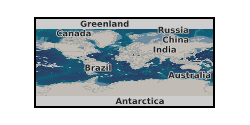
Data from laboratory experiments conducted as part of project NE/K011464/1 (associated with NE/K011626/1) Multiscale Impacts of Cyanobacterial Crusts on Landscape stability. Soils were collected from two sites in eastern Australia and transferred to a laboratory at Griffith University, Queensland for conduct of experiments. Soils were A, a sandy loam, and B a loamy fine sand. Trays 120 mm x 1200 mm x 50 mm were filled with untreated soil that contained a natural population of biota. Soils were either used immediately for experiments (physical soil crust only: PC) or were placed in a greenhouse and spray irrigated until a cyanobacterial crust has grown from the natural biota. Growth was for a period of 5 days (SS), c.30 days (MS2) or c.60 days (MS1). Following the growing period (if applicable) trays were placed in a temperature/humidity controlled room at 35° and 30% humidity until soil moisture (measured 5 mm below the surface) was 5%. Trays were then subject to rainfall simulation. Rainfall intensity of 60 mm hr-1 was used and rainfall was applied for 2 minutes (achieving 2 mm application), 8 minutes (achieving 8 mm application) or 15 minutes (achieving 15 mm application). Following rainfall, trays were returned to the temperature/humidity-controlled room under UV lighting until soil moisture at 5 mm below the surface was 5%. A wind tunnel was then placed on top of each tray in turn and a sequential series of wind velocities (5, 7, 8.5, 10, 12 m s-1) applied each for one minute duration. On each tray the five wind velocities were run without saltation providing a cumulative dust flux. For the highest wind speed, an additional simulation run was conducted with the injection of saltation sands. Three replicates of each rainfall treatment were made. Variables measured include photographs, spectral reflectance, surface roughness, fluorescence, penetrometry, chlorophyll content, extracellular polysaccharide content, Carbon, Nitrogen and splash erosion and particle-size analysis (of wind eroded material). Details of rainfall simulator, growth of cyanobacteria, laser soil surface roughness characterisation and wind tunnel design and deployment in Strong et al., 2016; Bullard et al. 2018, 2019. Bullard, J.E., Ockelford, A., Strong, C.L., Aubault, H. 2018a. Impact of multi-day rainfall events on surface roughness and physical crusting of very fine soils. Geoderma, 313, 181-192. doi: 10.1016/j.geoderma.2017.10.038. Bullard, J.E., Ockelford, A., Strong, C.L., Aubault, H. 2018b. Effects of cyanobacterial soil crusts on surface roughness and splash erosion. Journal of Geophysical Research – Biogeosciences. doi: 10.1029/2018. Strong, C.S., Leys, J.F., Raupach, M.R., Bullard, J.E., Aubault, H.A., Butler, H.J., McTainsh, G.H. 2016. Development and testing of a micro wind tunnel for on-site wind erosion simulations. Environmental Fluid Mechanics, 16, 1065-1083.
-
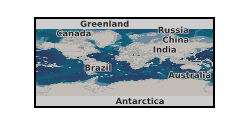
Data from laboratory experiments conducted as part of project NE/K011464/1 (associated with NE/K011626/1) Multiscale Impacts of Cyanobacterial Crusts on Landscape stability. Soils were collected from two sites in eastern Australia and transferred to a laboratory at Griffith University, Queensland for conduct of experiments. Soils were A, a sandy loam, and B a loamy fine sand. Trays 120 mm x 1200 mm x 50 mm were filled with untreated soil that contained a natural population of biota. Soils were either used immediately for experiments (physical soil crust only: PC) or were placed in a greenhouse and spray irrigated until a cyanobacterial crust has grown from the natural biota. Growth was for a period of 5 days (SS), c.30 days (MS2) or c.60 days (MS1). Following the growing period (if applicable) trays were placed in a temperature/humidity controlled room at 35° and 30% humidity until soil moisture (measured 5 mm below the surface) was 5%. Trays were then subject to rainfall simulation. Rainfall intensity of 60 mm hr-1 was used and rainfall was applied for 2 minutes (achieving 2 mm application), 8 minutes (achieving 8 mm application) or 15 minutes (achieving 15 mm application). Following rainfall, trays were returned to the temperature/humidity-controlled room under UV lighting until soil moisture at 5 mm below the surface was 5%. A wind tunnel was then placed on top of each tray in turn and a sequential series of wind velocities (5, 7, 8.5, 10, 12 m s-1) applied each for one minute duration. On each tray the five wind velocities were run without saltation providing a cumulative dust flux. For the highest wind speed, an additional simulation run was conducted with the injection of saltation sands. Three replicates of each rainfall treatment were made. Variables measured include photographs, spectral reflectance, surface roughness, fluorescence, penetrometry, chlorophyll content, extracellular polysaccharide content, Carbon, Nitrogen and splash erosion and particle-size analysis (of wind eroded material). Details of rainfall simulator, growth of cyanobacteria, laser soil surface roughness characterisation and wind tunnel design and deployment in Strong et al., 2016; Bullard et al. 2018, 2019. Bullard, J.E., Ockelford, A., Strong, C.L., Aubault, H. 2018a. Impact of multi-day rainfall events on surface roughness and physical crusting of very fine soils. Geoderma, 313, 181-192. doi: 10.1016/j.geoderma.2017.10.038. Bullard, J.E., Ockelford, A., Strong, C.L., Aubault, H. 2018b. Effects of cyanobacterial soil crusts on surface roughness and splash erosion. Journal of Geophysical Research – Biogeosciences. doi: 10.1029/2018. Strong, C.S., Leys, J.F., Raupach, M.R., Bullard, J.E., Aubault, H.A., Butler, H.J., McTainsh, G.H. 2016. Development and testing of a micro wind tunnel for on-site wind erosion simulations. Environmental Fluid Mechanics, 16, 1065-1083.
-
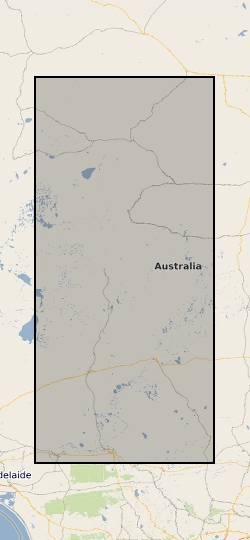
This dataset presents field measurements of the biological response of cyanobacterial soil crusts to rainfall and of the impact of this response on the susceptibility of the soil surface to wind erosion. The data are in Excel spreadsheets and record cyanobacteria fluorescence, the presence of chlorophyll a and exocellular polysaccharide, soil surface strength, particle size distribution and soil loss by wind erosion. The study was located within Diamantina National Park (23°36’44.8”S; 143°17’46.9”E) in the north-eastern part of the Lake Eyre basin, central Australia. Site characteristics are 1/A physical depositional crust; 2/B cyanobacterial crust on dune flank; 3/D cyanobacterial crust on claypan; 4/E physical structural crust; 5/C cyanobacterial crust on nebkha field. Different amounts of rainfall were applied using Griffith University Mobile Rainfall Simulator (see Bullard et al. 2018 for technical details). Following rainfall and drying in situ of the surface, wind erosion was measured using a portable mini-wind tunnel (see Strong et al. 2016 for technical details). The data will be of value for understanding cyanobacterial response to different rainfall amounts and wind speeds under future climate scenarios. The project principal investigator was Prof. Joanna Bullard and data Quality Assurance by Dr. Helene Aubault. Bullard, J.E., Ockelford, A., Strong, C.L., Aubault, H. 2018. Impact of multi-day rainfall events onsurface roughness and physical crusting of very fine soils. Geoderma, 313, 181-192. doi: 10.1016/j.geoderma.2017.10.038. Strong, C.L., Leys, J.F., Raupach, M.R., Bullard, J.E., Aubault, H.A., Butler, H.J., McTainsh, G.H. 2016. Development and testing of a micro-wind tunnel for on-site wind erosion simulations. Environmental Fluid Mechanics 16, 1065-1083.
-
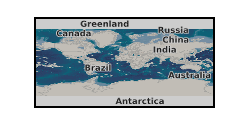
Data from laboratory experiments conducted as part of project NE/K011464/1 (associated with NE/K011626/1) Multiscale Impacts of Cyanobacterial Crusts on Landscape stability. Soils were collected from two sites in eastern Australia and transferred to a laboratory at Griffith University, Queensland for conduct of experiments. Soils were A, a sandy loam, and B a loamy fine sand. Trays 120 mm x 1200 mm x 50 mm were filled with untreated soil that contained a natural population of biota. Soils were either used immediately for experiments (physical soil crust only: PC) or were placed in a greenhouse and spray irrigated until a cyanobacterial crust has grown from the natural biota. Growth was for a period of 5 days (SS), c.30 days (MS2) or c.60 days (MS1). Following the growing period (if applicable) trays were placed in a temperature/humidity controlled room at 35° and 30% humidity until soil moisture (measured 5 mm below the surface) was 5%. Trays were then subject to rainfall simulation. Rainfall intensity of 60 mm hr-1 was used and rainfall was applied for 2 minutes (achieving 2 mm application), 8 minutes (achieving 8 mm application) or 15 minutes (achieving 15 mm application). Following rainfall, trays were returned to the temperature/humidity-controlled room under UV lighting until soil moisture at 5 mm below the surface was 5%. A wind tunnel was then placed on top of each tray in turn and a sequential series of wind velocities (5, 7, 8.5, 10, 12 m s-1) applied each for one minute duration. On each tray the five wind velocities were run without saltation providing a cumulative dust flux. For the highest wind speed, an additional simulation run was conducted with the injection of saltation sands. Three replicates of each rainfall treatment were made. Variables measured include photographs, spectral reflectance, surface roughness, fluorescence, penetrometry, chlorophyll content, extracellular polysaccharide content, Carbon, Nitrogen and splash erosion and particle-size analysis (of wind eroded material). Details of rainfall simulator, growth of cyanobacteria, laser soil surface roughness characterisation and wind tunnel design and deployment in Strong et al., 2016; Bullard et al. 2018, 2019. Bullard, J.E., Ockelford, A., Strong, C.L., Aubault, H. 2018a. Impact of multi-day rainfall events on surface roughness and physical crusting of very fine soils. Geoderma, 313, 181-192. doi: 10.1016/j.geoderma.2017.10.038. Bullard, J.E., Ockelford, A., Strong, C.L., Aubault, H. 2018b. Effects of cyanobacterial soil crusts on surface roughness and splash erosion. Journal of Geophysical Research – Biogeosciences. Doi: 10.1029/2018. Strong, C.S., Leys, J.F., Raupach, M.R., Bullard, J.E., Aubault, H.A., Butler, H.J., McTainsh, G.H. 2016. Development and testing of a micro wind tunnel for on-site wind erosion simulations. Environmental Fluid Mechanics, 16, 1065-1083.
 NERC Data Catalogue Service
NERC Data Catalogue Service